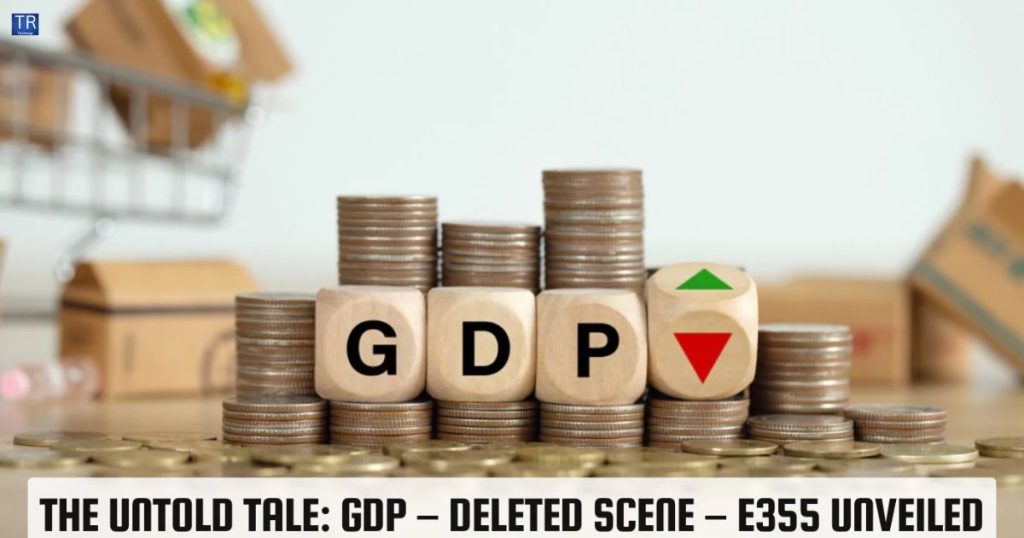Act 1: The Basics of GDP – A Quick Recap
Before we dive into the more obscure aspects, it’s essential to understand the basics. GDP represents the total monetary value of all goods and services produced within a country over a specific period, typically annually or quarterly. It’s a crucial measure that helps economists, policymakers, and analysts gauge the size, health, and direction of an economy.
But what if I told you that GDP, while powerful, doesn’t tell the whole story? Just like a movie with critical scenes left out in the final cut, GDP omits several vital elements that could change the narrative of a nation’s economic health.
Act 2: The Deleted Scenes – What GDP Doesn’t Show
- Income Inequality: GDP might indicate overall economic growth, but it doesn’t reveal who benefits from that growth. A country can have a soaring GDP, yet the wealth might be concentrated in the hands of a few, leaving a significant portion of the population struggling. This deleted scene highlights the importance of considering income distribution alongside GDP.
- Environmental Degradation: Another crucial aspect that GDP omits is the impact of economic activities on the environment. A rising GDP might reflect increased industrial activity, but it doesn’t account for the pollution, deforestation, and other environmental harms caused. This is the dark side of economic growth that GDP fails to capture, making it a crucial deleted scene in the full picture of economic health.
- Unpaid Work: Many forms of labor, such as caregiving, household chores, and volunteer work, contribute significantly to the well-being of a society but are not reflected in GDP. These activities, often performed by women, are invisible in GDP calculations, yet they are vital for the functioning of economies.
- Quality of Life: GDP measures economic activity, but it doesn’t account for the quality of that activity. For example, it can’t differentiate between money spent on healthcare to treat an illness and money spent on a vacation. Both contribute to GDP, but only one enhances the quality of life. The nuances of well-being and happiness are lost in the GDP narrative.
- The Shadow Economy: Another scene left on the cutting room floor is the shadow economy, which includes all economic activities that go unreported or underreported, such as black-market transactions, unregistered businesses, and informal employment. These activities might contribute significantly to livelihoods, especially in developing countries, but they don’t appear in official GDP figures.
Act 3: The Alternative Endings – Complementary Measures to GDP
Given the limitations of GDP, economists and policymakers have proposed alternative or complementary measures that offer a more comprehensive view of economic health:
- Genuine Progress Indicator (GPI): This adjusts GDP by considering factors like income distribution, environmental costs, and levels of education and crime. It offers a more holistic view of progress.
- Human Development Index (HDI): This combines GDP with indicators of life expectancy, education, and per capita income to provide a broader perspective on human well-being.
- Gross National Happiness (GNH): Pioneered by Bhutan, GNH focuses on the well-being and happiness of citizens rather than just economic output.
Conclusion: GDP – More Than Just a Number
While GDP remains a critical tool for measuring economic performance, it’s essential to recognize its limitations. The “deleted scenes” of income inequality, environmental degradation, unpaid work, quality of life, and the shadow economy reveal that GDP is not the whole story. As we continue to analyze and discuss economic health, we must consider these hidden aspects and seek a more nuanced understanding of what true progress looks like.
FAQs
1. What is GDP, and why is it important?
- GDP stands for Gross Domestic Product and measures the total value of goods and services produced within a country. It’s important because it helps gauge the economic health and size of an economy.
2. What are some limitations of GDP?
- GDP does not account for income inequality, environmental degradation, unpaid work, quality of life, or the shadow economy.
3. What is the shadow economy, and why is it significant?
- The shadow economy includes unreported or informal economic activities. It’s significant because it can represent a substantial portion of economic activity, especially in developing countries, yet it’s not captured in GDP.
4. What are some alternatives to GDP?
- Alternatives include the Genuine Progress Indicator (GPI), Human Development Index (HDI), and Gross National Happiness (GNH), which offer a more comprehensive view of economic and social well-being.
5. Why should we consider complementary measures to GDP?
- Complementary measures provide a fuller picture of economic health, considering factors like well-being, environmental sustainability, and social equity, which GDP alone does not capture.

